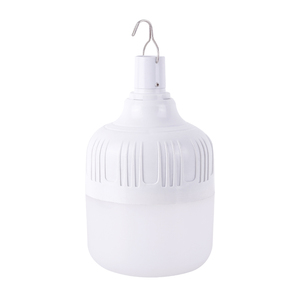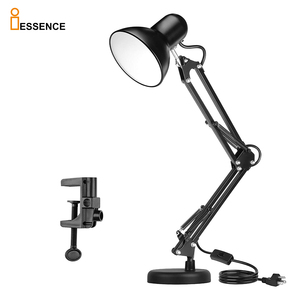Popular in your industry



































































Related Searches:





































































































































Top categories
About emergency lighting batteries
An emergency lighting battery is a critical component in the safety infrastructure of buildings, providing power to lighting systems when the main power supply fails. These batteries are designed to be reliable and durable, ensuring that emergency lighting remains operational during power outages, thus facilitating safe evacuation and providing visibility in critical situations. With a variety of materials like Plastic, ABS, PC, Aluminum, and Steel, and battery types including Lithium, Ni-cd, Lead-acid, and Lithium-ion, emergency lighting batteries are tailored to meet diverse operational needs.
Types and Characteristics of Emergency Lighting Batteries
Delving into the types of emergency lighting batteries, we find a spectrum of products each with unique characteristics. For instance, the 9 Watt Emergency Bulb with a rechargeable battery is designed for residential use, providing a reliable light source that can be used in standard home fixtures. On the other hand, the 25W Internal Drive LED Light Full Power Output emergency battery pack is tailored for commercial settings, offering robust performance for larger spaces. Each type is engineered to meet specific emergency lighting requirements, from the compact keychain flashlight batteries for personal use to larger, high-capacity batteries designed for industrial facilities.
Structure and Operation of Emergency Lighting Batteries
The structure of an emergency lighting battery is a marvel of engineering, comprising several key components that work in unison. At its core, the battery cell stores the electrical charge, which is then regulated by a circuit board to ensure consistent power delivery. The casing, made from durable materials like ABS or Aluminum, houses the cell and protects it from environmental stressors. The interface, whether it's a simple plug-in mechanism or a sophisticated wireless system, allows for seamless integration with the lighting fixture. Understanding the interplay between these components is crucial for ensuring the reliability of the emergency lighting system.
Materials and Their Properties in Emergency Lighting Batteries
The materials used in emergency lighting batteries are selected for their durability, conductivity, and stability. Plastics like ABS and PC offer a lightweight yet sturdy exterior, while metals such as Aluminum and Steel provide additional protection and heat dissipation qualities. Inside, the battery cells themselves might be made from Lithium for its high energy density, or Nickel-Cadmium for its excellent cycle life. Each material brings its own set of benefits, from the ruggedness required to withstand harsh conditions to the chemical properties that enable long-term energy storage.
Business Usages and Applications of Emergency Lighting Batteries
In the realm of business, emergency lighting batteries find their place in a multitude of settings. In the hospitality industry, they ensure that guests can safely navigate corridors during power outages. Manufacturing plants rely on them to keep emergency exits and safety equipment illuminated, preventing accidents in the event of a power failure. The value they provide in terms of safety and compliance with regulations makes them indispensable in any business continuity plan.
Functions of Emergency Lighting Batteries
The primary function of an emergency lighting battery is to provide immediate power to lighting systems when the main supply is interrupted. Beyond this, they are designed to perform specific tasks such as powering LED indicators for exit signs, or enabling the functionality of self-testing systems that can automatically diagnose faults within the emergency lighting network.
Features of Emergency Lighting Batteries
Among the distinct features of emergency lighting batteries are their quick recharge times, long shelf-life, and the ability to deliver a high power output in a short burst, which is essential during the initial phase of a power outage. Some models come with smart features like remote testing capabilities, which allow maintenance personnel to monitor battery health without physical inspections, setting them apart from competitors.
Benefits of Emergency Lighting Batteries
The benefits of using emergency lighting batteries are manifold. They provide peace of mind, knowing that essential lighting will remain operational in emergencies. They also reduce the risk of accidents during evacuations and can be instrumental in avoiding costly business interruptions. For the end-user, this translates into enhanced safety and potentially lower insurance premiums due to improved risk management.
How to Use and Maintain Emergency Lighting Batteries
Effective operation of emergency lighting batteries begins with correct installation, which should always be performed by a qualified electrician following the manufacturer's guidelines. Choosing the right battery involves considering factors such as the size of the area to be illuminated and the duration of coverage required. Maintenance involves regular testing and cleaning, with the replacement of batteries as recommended by the manufacturer to ensure optimal performance.
Target Audience and Meeting Their Needs
The target audience for emergency lighting batteries is broad, encompassing facility managers in commercial buildings, safety officers in industrial settings, and homeowners looking for reliable emergency solutions. Each product is designed with the end-user in mind, whether it's a battery with a longer lifespan for industrial use or one with a more aesthetic design for residential applications. Understanding the needs and preferences of these diverse groups is key to providing a product that meets their specific safety and regulatory requirements.
Does the battery type affect the performance of emergency lighting?
Yes, the battery type has a significant impact on the performance of emergency lighting batteries. Factors such as energy density, discharge rate, and operational temperature range all influence how a battery will perform in an emergency situation. For instance, Lithium-ion batteries offer a high energy density and are capable of providing a stable power supply for longer durations, which is crucial in prolonged power outages.
How do the materials used in batteries contribute to safety?
The materials used in emergency lighting batteries contribute to safety by providing robust protection against physical impacts and environmental conditions. Durable materials like ABS and Steel ensure that the battery remains intact and functional even in harsh conditions. Furthermore, the non-reactive nature of these materials minimizes the risk of leakage or battery failure, which is essential for maintaining safety standards.
What services are essential for integrating emergency lighting batteries into a building's infrastructure?
Services such as Onsite metering, Agi32 layout, and Project installation are essential for the proper integration of emergency lighting batteries into a building's infrastructure. These services ensure that the emergency lighting system is designed and installed to provide optimal coverage and performance. Professional planning and installation are crucial for ensuring that the emergency lighting operates effectively when it is most needed, thereby enhancing the safety and security of the building's occupants.






















































